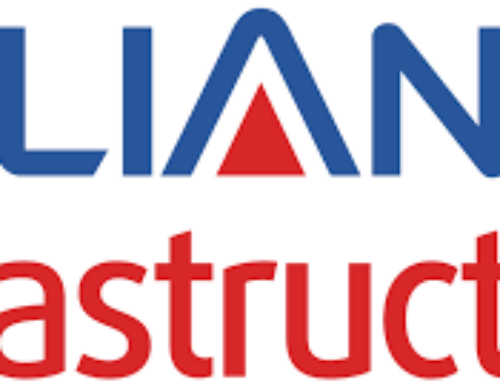
Industry Profile: The modern reinsurance industry’s evolution dates to 1842, when the first reinsurance company, Cologne Re, was established in Germany. Industry giants, such as Swiss Re and Munich Re, were found around the same time. Reinsurance refers to the arrangement whereby insurers transfer part of the risks and liabilities written to one or more insurers or reinsurers by entering reinsurance contracts. Reinsurance is considered the insurance of insurance. Retrocession is the risk transfer by a reinsurer in the same way. Retrocessional coverage consists of reinsurance purchased to cover a portion of the risks that the reinsurer is covering for the underlying insurance companies.
The size of the global reinsurance market is estimated to be around USD 230 billion in 2016, with the non-life segment accounting for 70% of the market. In recent years, alternative capital products have emerged as a substitute for traditional reinsurance contracts. Alternative capital refers to a source of reinsurance capacity based on investors directly investing in certain reinsurance risks such as catastrophe bonds, collateralized reinsurance, and insurance-linked securities.
Reinsurance allows direct insurers to manage capacity, ease the surplus strain, minimize fluctuations in claim payments and lapse exposure and manage their portfolios. The reinsurance industry also provides insurance companies access to important industry information and expertise. There are two main types of reinsurance: treaty and facultative reinsurance.
Treaty reinsurance :
In treaty reinsurance, the cedent seeks reinsurance for a specific type of insurance or class of risks insured under a direct insurance contract or particular risks within a certain period. The cedent enters treaty reinsurance contracts with the reinsurer, which set out their rights and obligations, including the type of treaty contract, the scope of business, treaty limit, account settlement, and exclusions. Once the treaty is in place, the cedent is obliged to cede, and the reinsurer is obliged to reinsure all the business that comes within the scope of the terms and conditions under the treaty. Generally, under a treaty arrangement, the reinsurer does not separately evaluate each risk assumed under the contract, and they follow
the original underwriting decision made by the cedent.
Facultative reinsurance :
Facultative reinsurance constitutes a separately negotiated contract of reinsurance in respect of each original contract
Of insurance. This permits the reinsurer to decide in each case whether to underwrite each risk and to price the reinsurance to reflect the risks more accurately. Cedents usually seek facultative reinsurance for risks that are not covered by their
treaty reinsurance arrangements exceed the sum insured by their treaty arrangements and complex or unusual risks.
There are two subparts of treaty reinsurance :
Proportional (quota – share).
In proportional reinsurance arrangements, the cedent’s retention amount and the reinsurer’s liability are determined according to the sum insured. The cedent and the reinsurer share the risk on a proportional basis. Premium and losses are allocated according to the agreed percentage of the sum insured. Facultative reinsurance contracts are usually symmetrical.
Non – Proportional (excess)
In non – proportional insurance, the liabilities of the cedent and the reinsurer are calculated based on losses. Once the losses incurred by the cedent exceed the agreed amount, the reinsurer will be liable for a specified portion or all the excess loss. These are known as additional loss agreements.
Company Profile: Incorporated in 1972, GIC is the largest reinsurer in India in terms of gross premiums accepted in Fiscal 2017 and accounted for approximately 60% of the premiums ceded by Indian insurers to reinsurers during Fiscal 2017. The Company operated in 162 countries and was ranked the 12th largest Global reinsurance company in 2016. The Company provides reinsurance across many key business lines, including fire (property), marine, motor, engineering, agriculture, aviation/space, health, liability, credit, and financial and life insurance. The Company has branch offices in London, Dubai, and Kuala Lumpur, a representative office in Moscow, a subsidiary in the United Kingdom that is a member of Lloyd’s of London, and a subsidiary in South Africa. The Company writes reinsurance for every non-life and over half of the life insurance companies in India. It has long-term business relationships with almost all of these domestic insurance companies.
The Company Rated A For AM Best rating.
Shareholding Pattern: BSE Data
Financials and ratio : [table id=96 /]
Future prospectus: Govt has opened Reinsurance Sector for Private sector players since 2016, and so Many MNCs, as well as Indian private companies, have entered the market, but Being a Public sector company, it is straightforward for GIC to dominate the market. In contradiction with the Global trend, interest rates in India are high, and while writing, the rate cycle is expected to go upwards. These factors are helping the Company. During the recent IPO, Company came up with Fresh Equity, which increased its capital base. IPO also allows the Company to rope LIC as its investor. Recently HDFC group also entered in Reinsurance market by setting up a reinsurance company in London. Berkshire Hathaway is also setting up business in India.
With eight foreign reinsurers and Lloyd’s being allowed to set up branch offices in India, the focus of these players on the Indian market is likely to increase. Although these reinsurers previously sourced business in India overseas, setting up
branch offices will bring them closer to their customers. Any increase in price competition from these foreign reinsurers would
hurt the industry.
Like this:
Like Loading...




